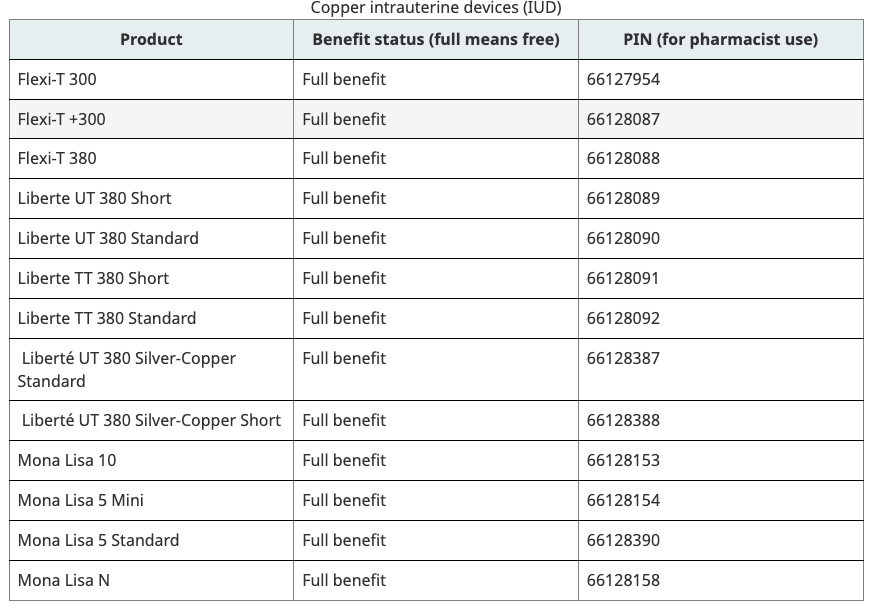IUD Contraception
Gentle Insertion and the Wide Variety of IUDs: A Comprehensive Guide to IUD Insertions at Mint
When it comes to contraception, intrauterine devices (IUDs) have gained immense popularity due to their effectiveness, convenience, and long-term use. With advancements in medical technology, the process of IUD insertion has become increasingly less uncomfortable, and the variety of available options has expanded significantly.
Who Should Consider an IUD?
IUDs are an excellent option for patients/couples who are looking for long term and highly effective birth control (>99%). They are ideal because they prevent pregnancy without needing to remember to take a pill every day or use a barrier method each time (ex. condoms). They also are suitable for those who do not tolerate hormones well and have very few side effects. Once an IUD is removed, fertility resumes immediately making them a good choice even for couples who desire a pregnancy in the near future.
The other major use for IUDs is in people who experience heavy or painful bleeding with their periods. IUDs are commonly used during the perimenopausal transition to help manage these bothersome symptoms. IUDs can drastically improve quality of life for some people.
IUDs can also be used as emergency contraception when used after unprotected intercourse or potential contraceptive failure and before implantation
Gentle IUD insertions and removals: A Revolutionary Approach
One of the primary concerns associated with IUDs has traditionally been the perceived discomfort during the insertion procedure. However, modern advancements have revolutionized the process, making it far more comfortable for patients. We use the following techniques at Mint to reduce discomfort with IUD insertions:
Education: Studies show that when patients are fully informed and prepared for an IUD insertion, it minimizes their anxiety and discomfort. At Mint, we pride ourselves in taking the time to walk you through the process and what you can expect on the day of, and after the insertion. Our warm, stress free environment helps to make the overall experience as smooth and relaxed as possible.
Local Anesthesia: We use a local anesthetic on all patients to freeze the cervix and minimize pain with procedure.
Cervical Dilation: Prior to IUD insertion, the cervix can be softened and dilated using medication. This allows for an easier insertion in select patients.
Proper Timing: We are very careful to schedule the IUD insertion during or right after a menstrual period. During this time, the cervix is naturally more open and allows for a smoother process.
Ultrasound – Guided IUD Insertion: In all cases, Mint healthcare providers opt for ultrasound guidance during IUD insertion. This allows us to visualize and measure the uterus before and after the insertion to enhance safety and precision.
Ultrasound-guided IUD Insertion: Enhanced Precision And Safety
In all cases, Mint healthcare providers opt for ultrasound guidance during IUD insertion. This allows us to visualize and measure the uterus before and after the insertion to enhance safety and precision.
Enhanced Precision: By visualizing the uterus prior to insertion, ultrasound guidance allows for an easier insertion and more precise placement. This reduces the risk of improper positioning and increases the overall effectiveness of the contraception.
Safety Assurance: Ultrasound guidance helps us avoid potential complications and provides visual confirmation of the IUDs correct placement. It also allows us to rule out patients for whom an IUD is not indicated based on structural anomalies of the uterus.
Increased Patient Comfort: Knowing the size, contour and shape of the uterus prior to IUD insertion allows us to accurately navigate the insertion process, minimizing discomfort and reducing the need for additional attempt
IUD Doctor Referral Form
Download hereIUD Cost
Beginning April 1, 2023, PharmaCare will pay for many prescription contraceptives for any B.C. resident. You can get them at most community pharmacies, with a prescription and your BC Services Card.


As always, it is crucial to consult with your Mint healthcare provider who can guide you through the process, discuss the benefits and potential risks, and determine the most suitable IUD and insertion technique for your individual circumstances. By staying informed and working closely with your healthcare provider, you can confidently choose IUD contraception, knowing that the procedure can be painless and safe, with ultrasound guidance providing an additional level of precision and assurance.
Our highly trained naturopathic physicians are proud to offer IUD insertion services at Mint.

